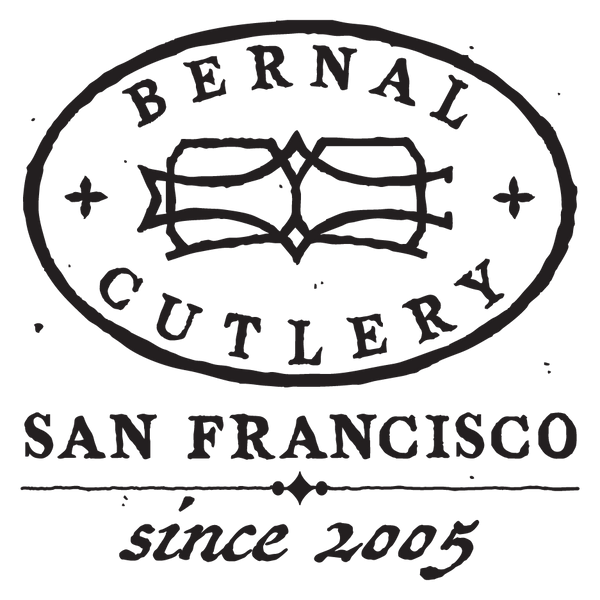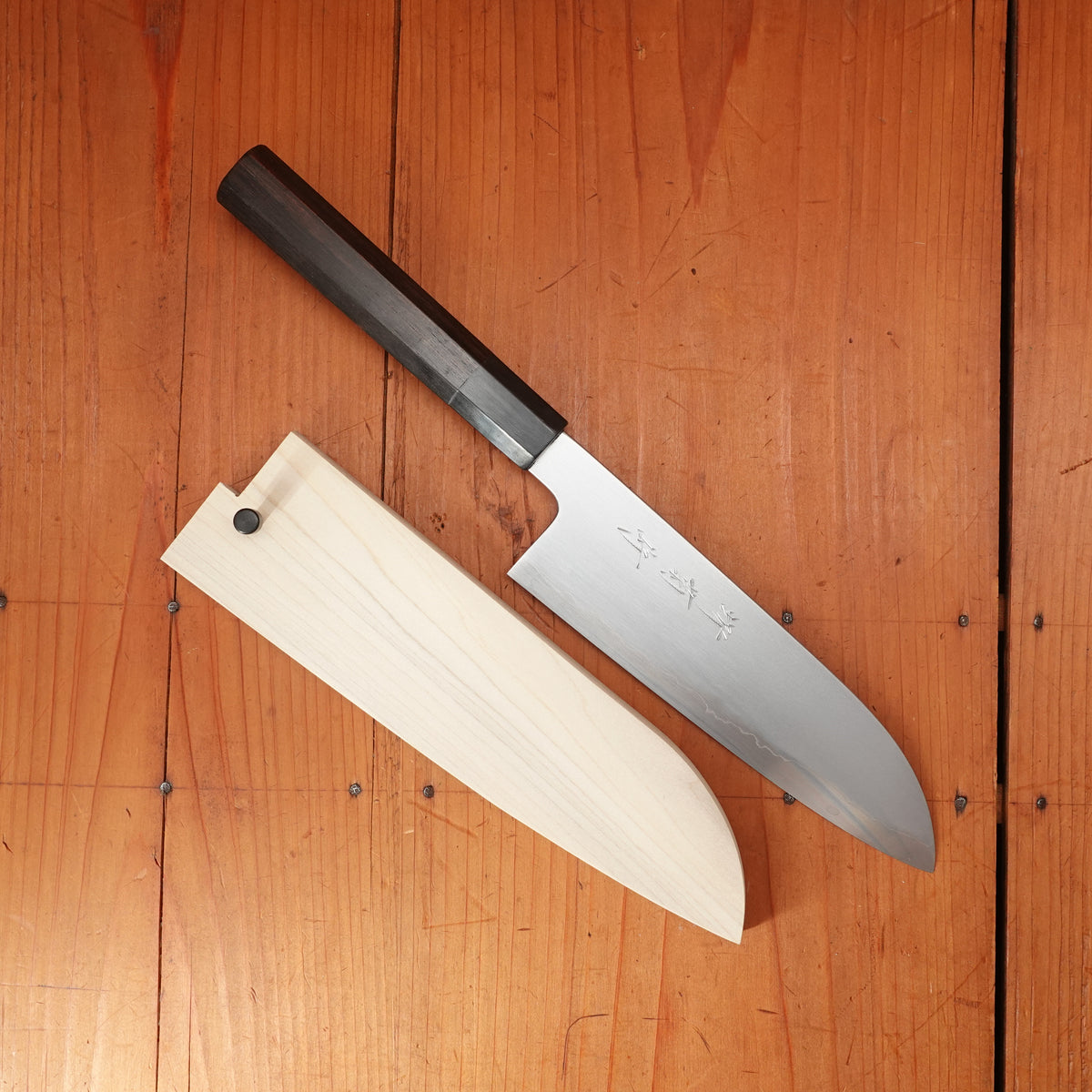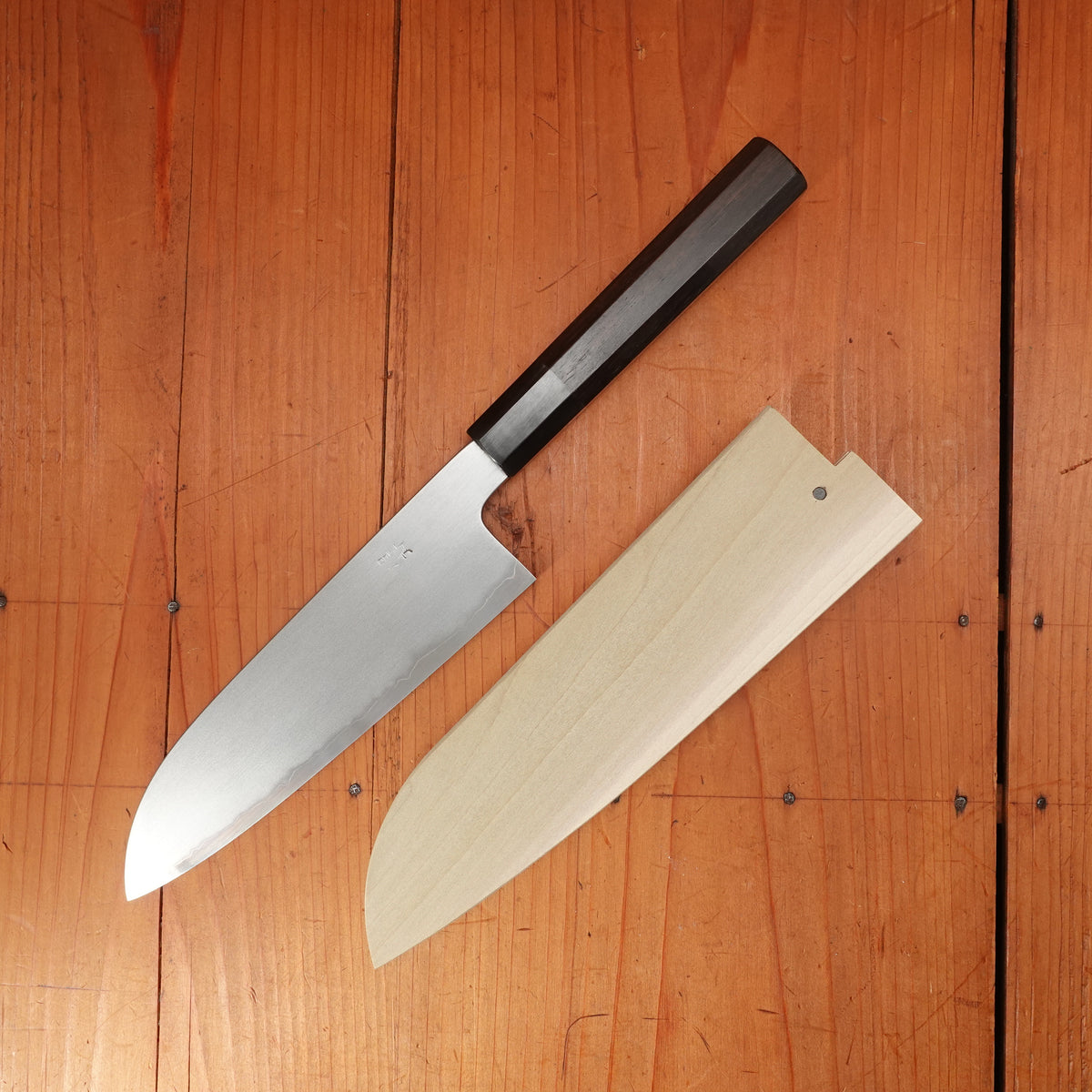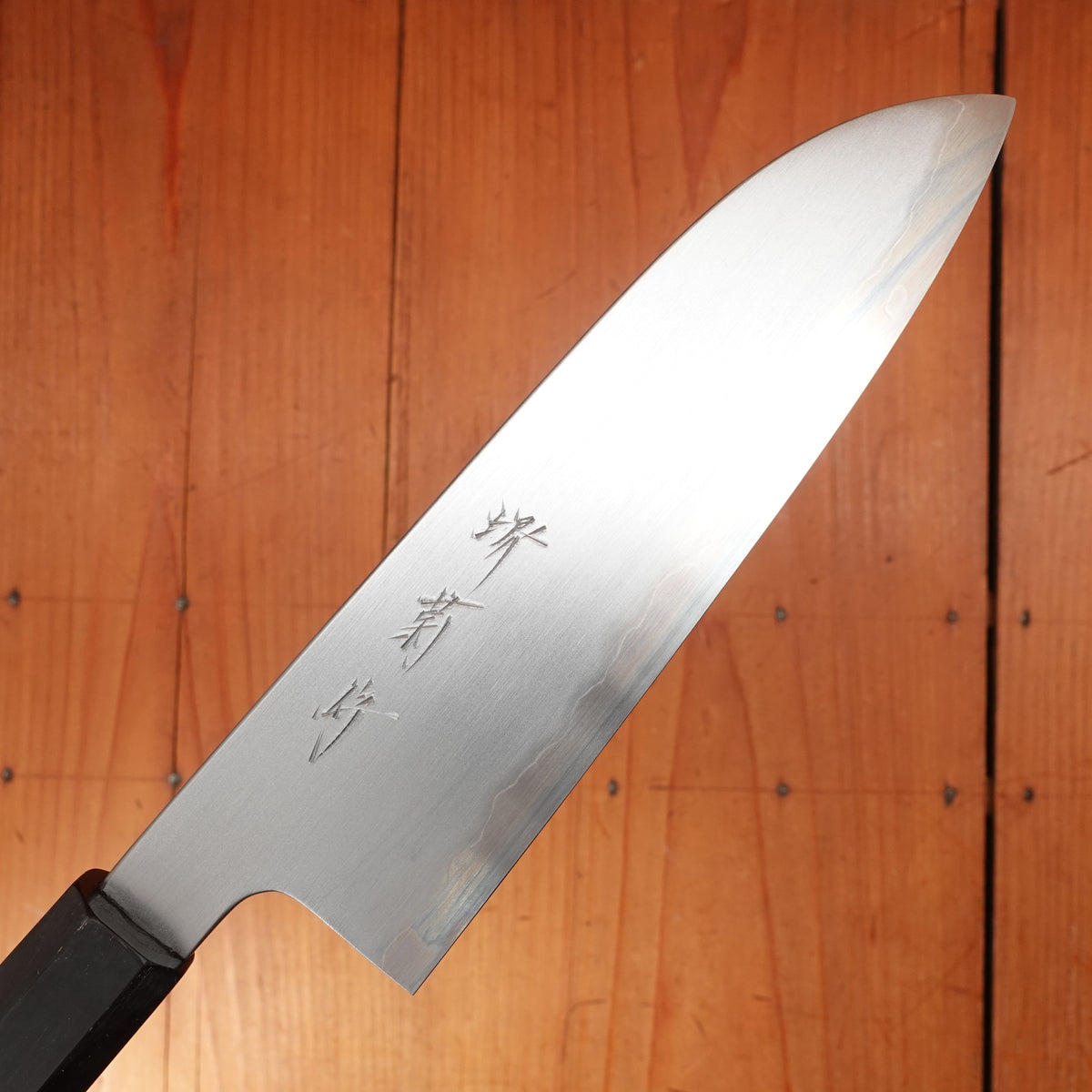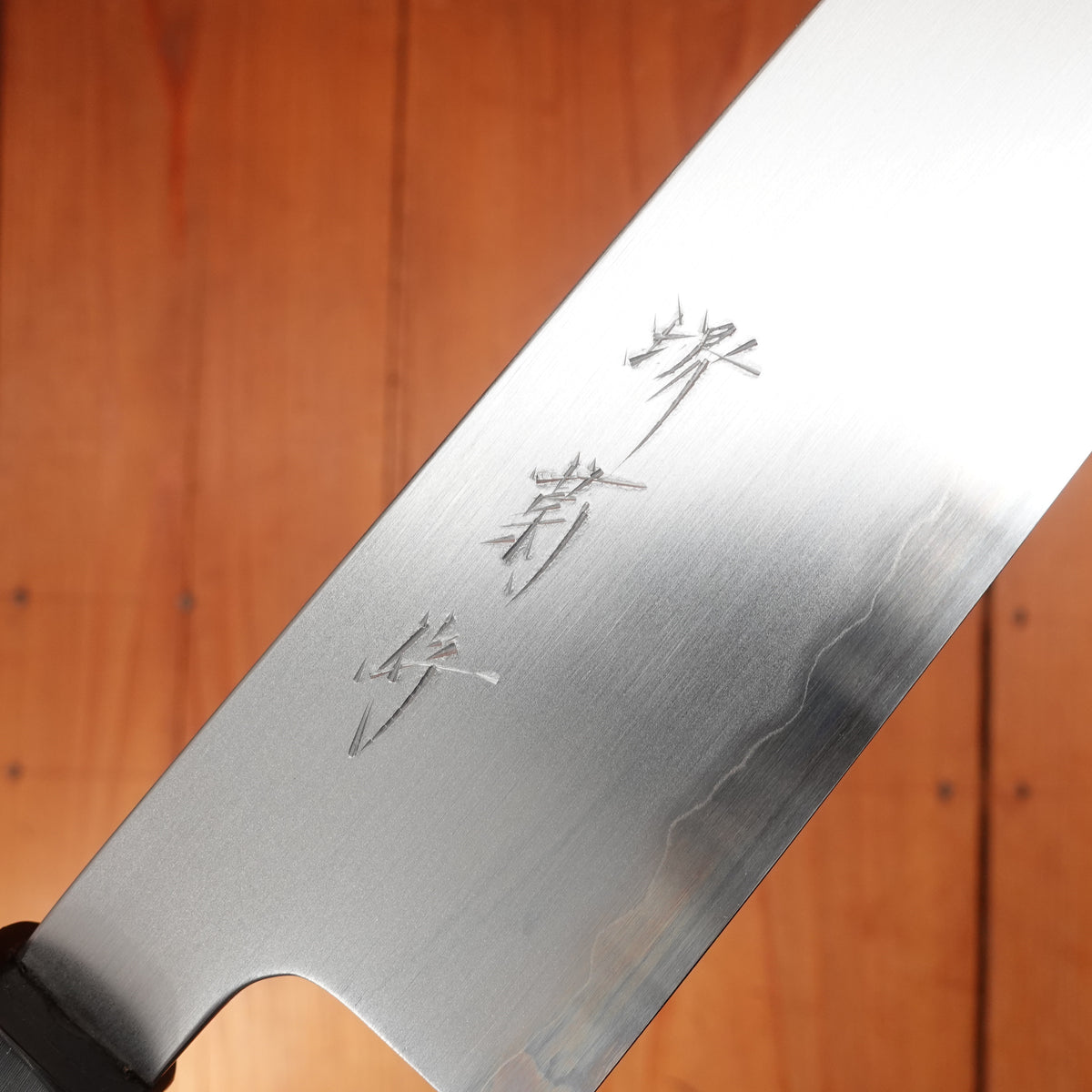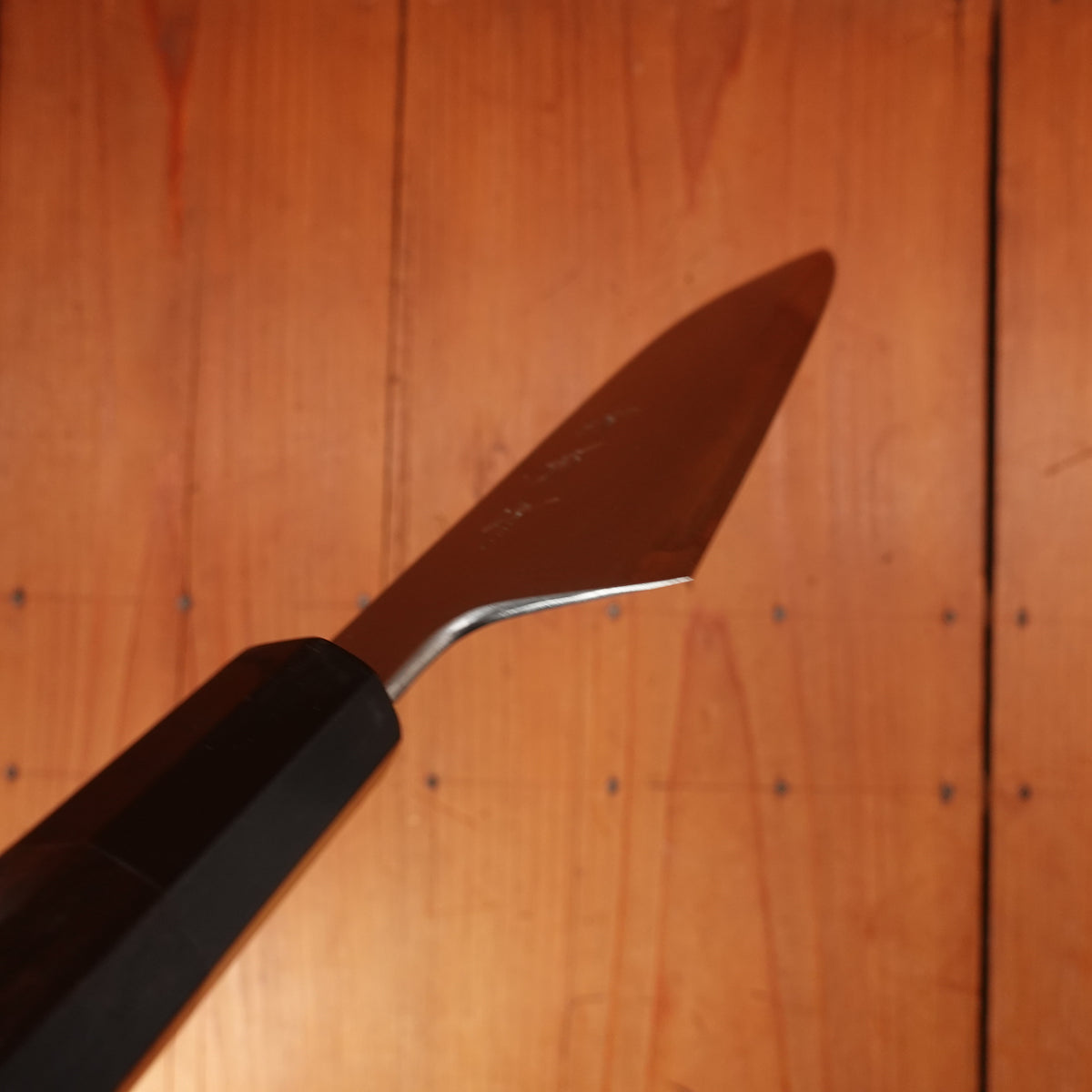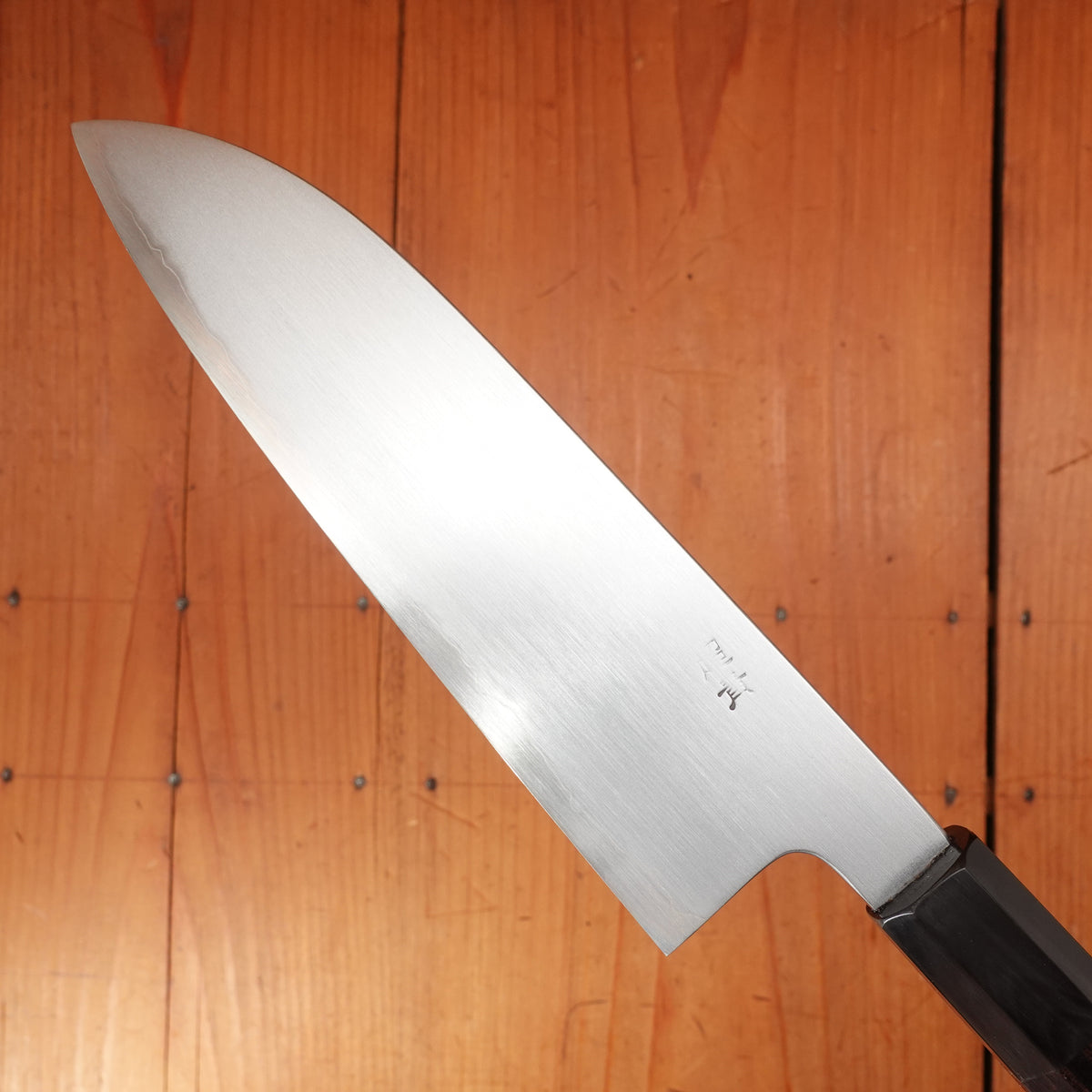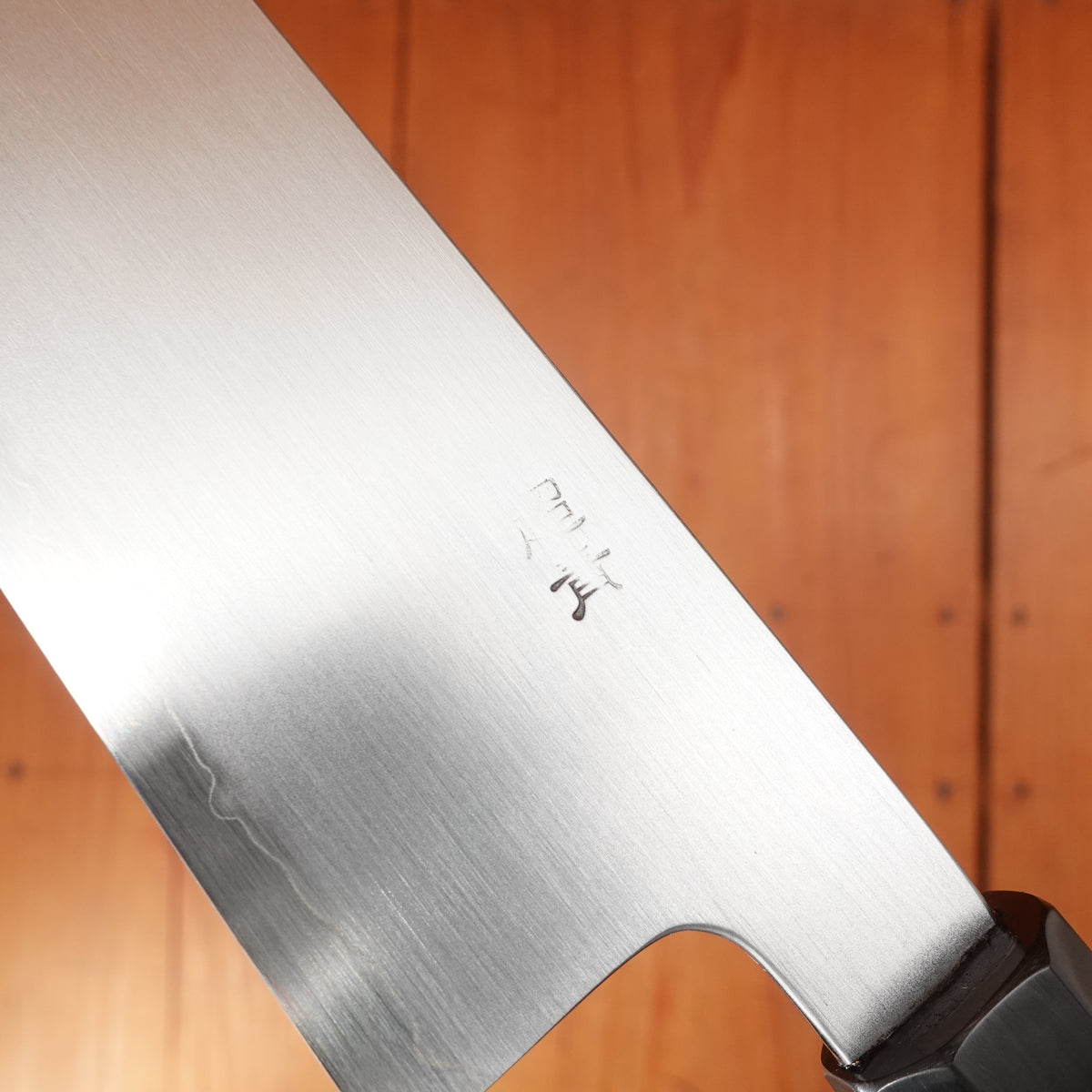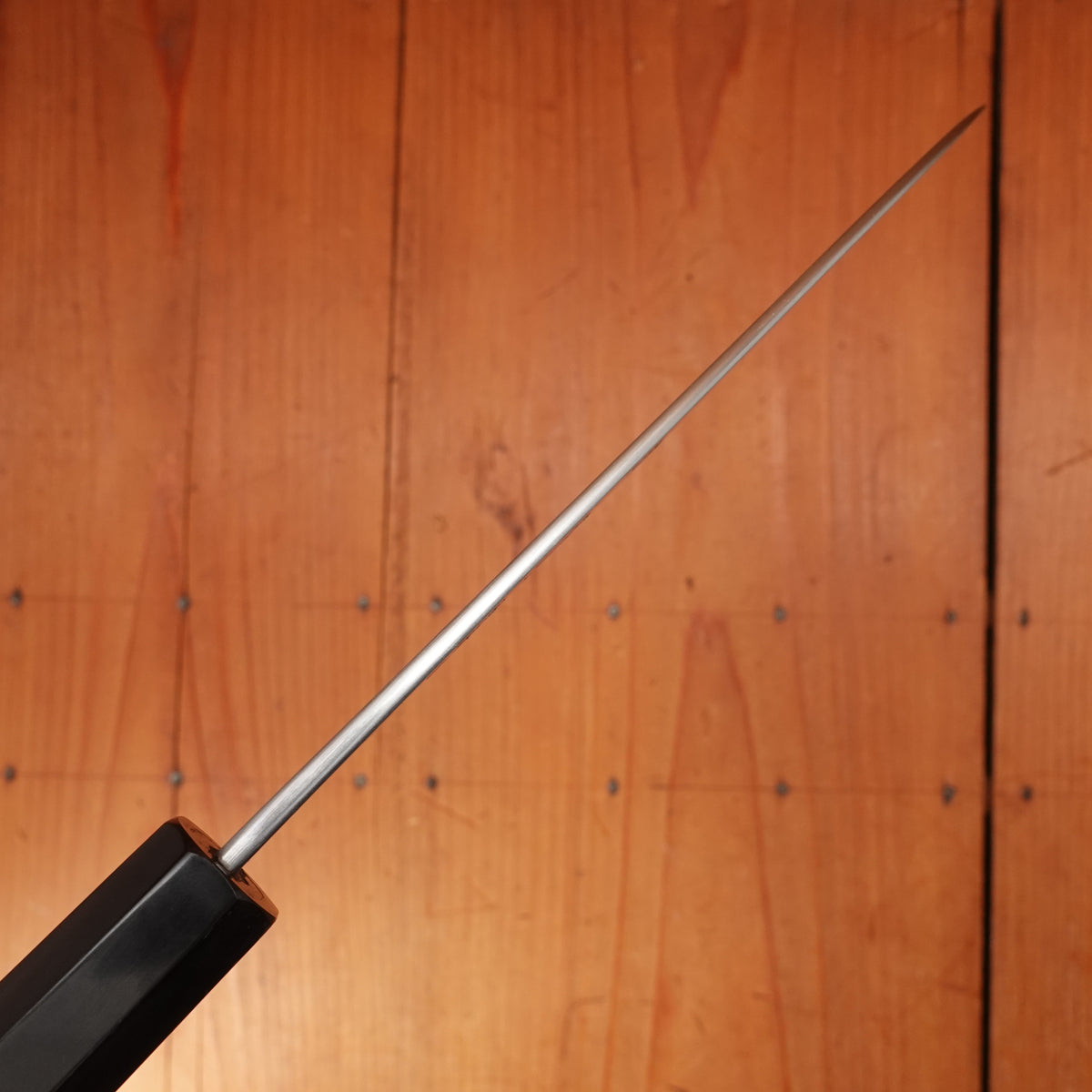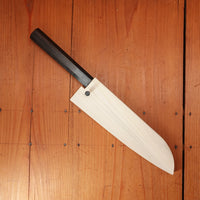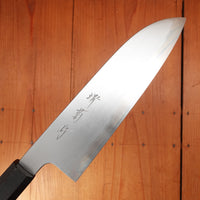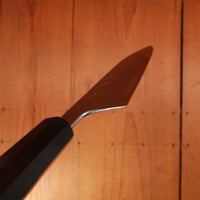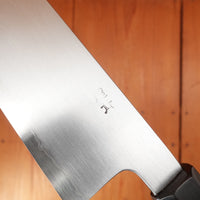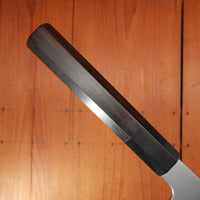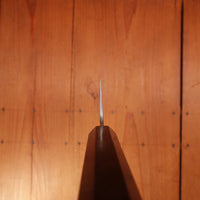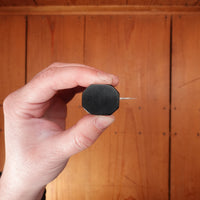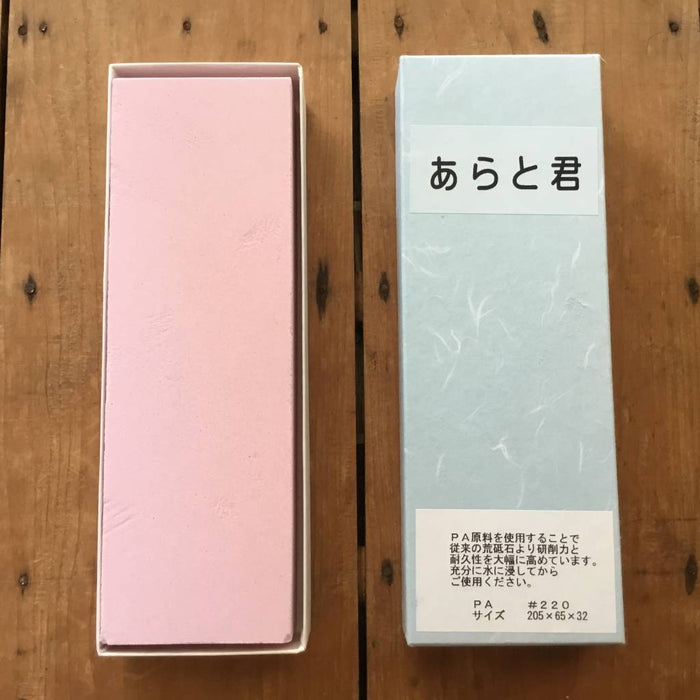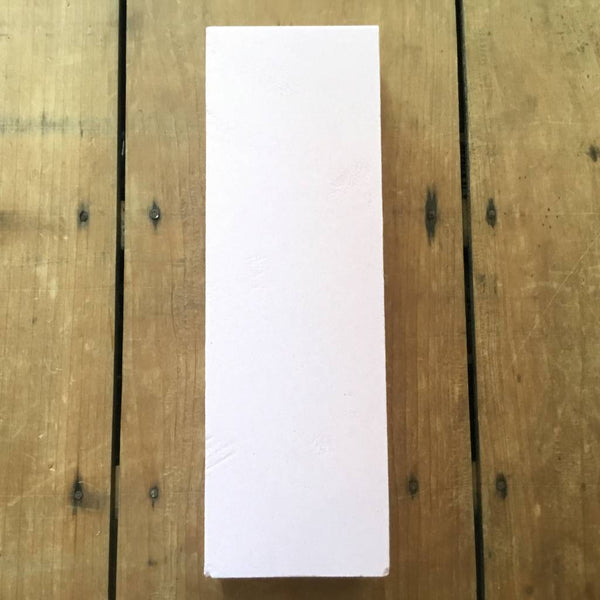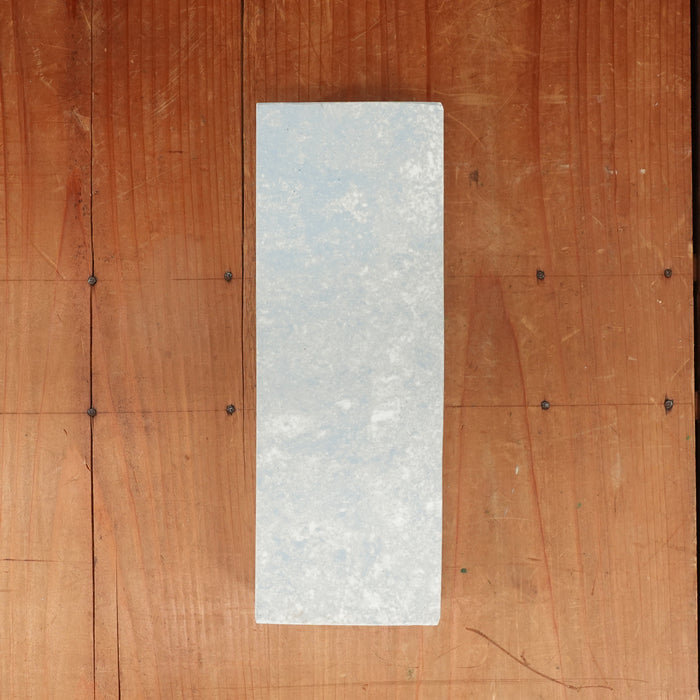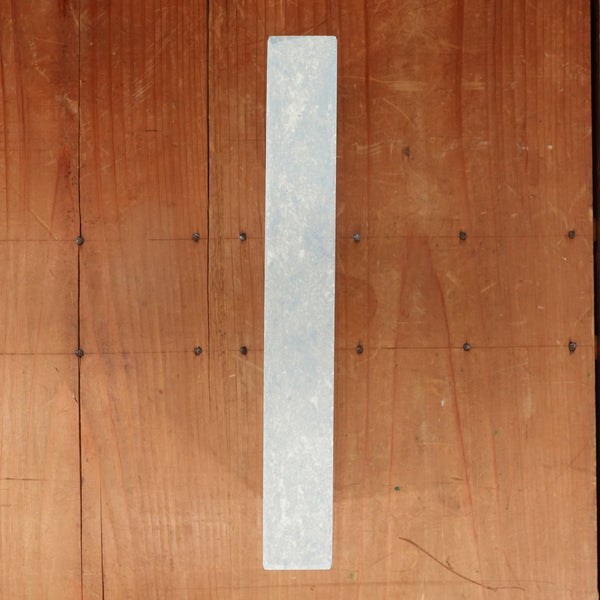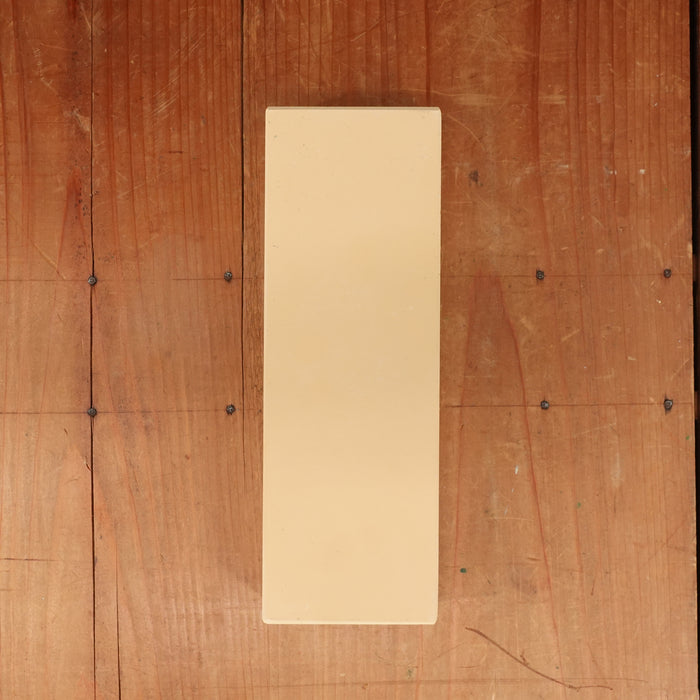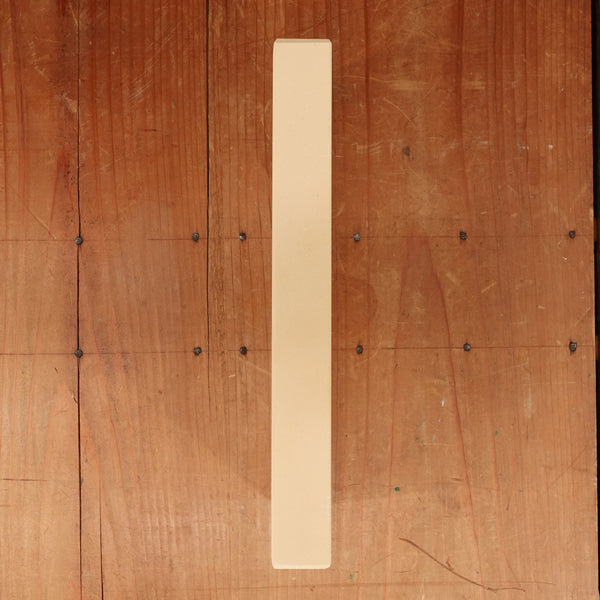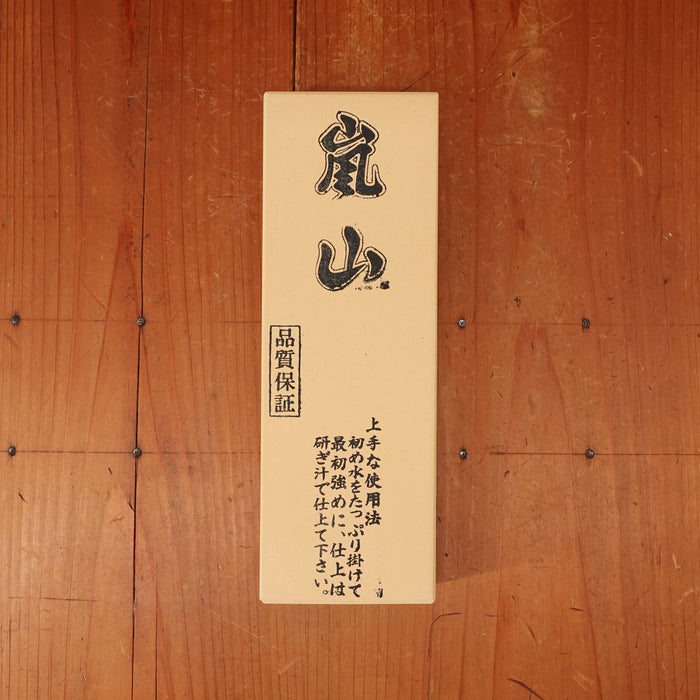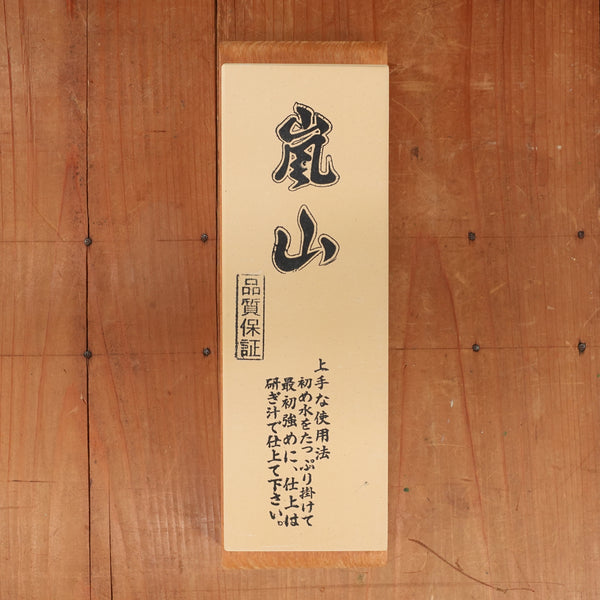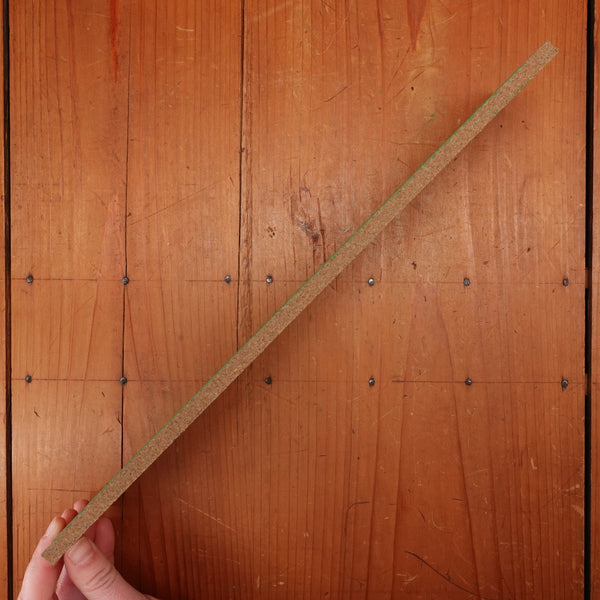Sakai Kikumori So-Ten 180mm Santoku Aogami Super with Saya
-
Regular Price
-
€569,87
-
Sale Price
-
€569,87
-
Regular Price
-
Sold Out
-
Unit Price
- per
- Regular Price
- €569,87
- Sale Price
- €569,87
- Regular Price
- Unit Price
- per
Sakai Kikumori So-Ten 180mm Santoku Aogami Super with Octagonal Bbony Wood and Water Buffalo Ferrule Handle. Comes with Saya.
So-Ten series knives are forged by Tanaka Hamono. Tanaka-san’s top level forging and heat treatments make for unusually easy sharpening, superb edge life and toughness. Not many Sakai Dentoukougeishi blacksmiths work with aogami super. It is very exciting to receive these.
Aogami super knives usually hold an edge for a long time, but most don’t actually work well at a fine finish. Tanaka-san’s temperature control during forging, combined with thorough heat treatments make for far better edge formation than the average aogami super. There is no glassy, hard feeling during cutting or on stones.
This knife has a hard carbon steel core with iron cladding for added durability. The entire blade will develop a patina with use, especially with acidic foods. Special attention is needed to keep from rusting. Do not leave wet. Hand wash & dry, no dishwasher. Hardwood-end grain or softwood long grain cutting boards are preferred; avoid bamboo and plastic cutting boards. Rust can be removed with a light abrasive.
Sakai Kikumori was started in 1926 and draws on Sakai's 600 year history as the major center of traditional Japanese cutlery manufacturing. They work with a large variety of Sakai's best smiths, sharpeners and small factories to offer a wide variety of knives ranging from traditional to modern.
These knives come from the maker with lacquer on the blade for corrosion protection during shipping. It can be removed using acetone or lacquer thinner (follow manufacturers instructions for use).
If you would like us to remove it prior to shipping, enter "Please remove lacquer" in the +Special Instructions on the Cart page. This could delay shipping by up to 5 days.
About This Knife



Listed Length: 180mm
Total Length:
Edge Length:
Heel Height:
Spine Thickness:
Weight:
Orientation: Right-hand Bias
Blade Type: Carbon Steel
Steel Type: Aogami Super (Blue Super Steel)
Steel Hardness (HRC): 64-65
Reactive: More Attention
Handle Type: Japanese (wa)
Handle Material: Ebony & Horn Ferrule
Dive Deeper
Medium-Fine finish - Japanese
Sharpening Supplies
Stones & Accessories selected specifically for this knife.
Arato-kun #220 Extra Coarse Grit Whetstone
- Regular Price
- €29,36
- Sale Price
- €29,36
- Regular Price
-
- Unit Price
- per
Bernal Cutlery Takarazukushi 1200 Grit Blue Marble Semi-Soft Ceramic Japanese Whetstone
- Regular Price
- €63,89
- Sale Price
- €63,89
- Regular Price
-
- Unit Price
- per
Bernal Cutlery Takarazukushi 4000 Grit Yellow Semi-Hard Resinoid Japanese Whetstone
- Regular Price
- €70,80
- Sale Price
- €70,80
- Regular Price
-
- Unit Price
- per
Arashiyama #6000 Whetstone Stone NO Wooden Base
- Regular Price
- €50,08
- Sale Price
- €50,08
- Regular Price
-
- Unit Price
- per
Arashiyama #6000 Whetstone With Nagura Stone and Wooden Base
- Regular Price
- €53,53
- Sale Price
- €53,53
- Regular Price
-
- Unit Price
- per
Bernal Cutlery Monodiachrome™ Precharged Deburring Strop
- Regular Price
- €34,54
- Sale Price
- €34,54
- Regular Price
-
- Unit Price
- per
